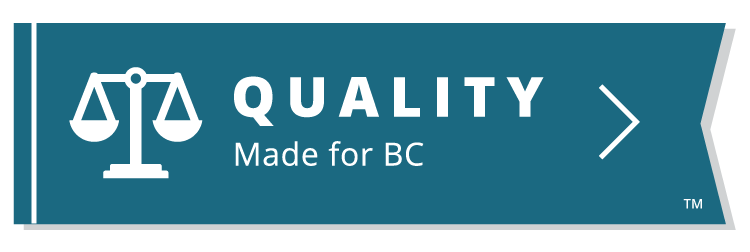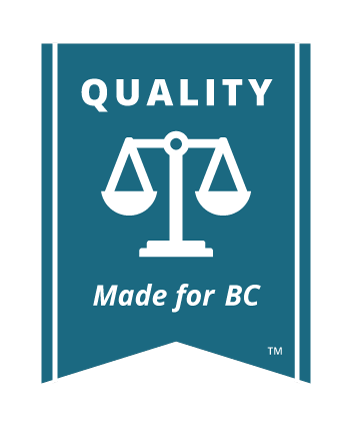Chambers Application Basics
You may need to bring, or respond to, an application to Court before your trial or petition hearing. Usually, applications are made to deal with issues that come up on the way to the final trial or petition hearing. However, sometimes applications are made that could result in a final decision in your case.

Key Terms
An application is when a party asks the Court to make an order to resolve issues that come up in your case.
Petitions to the Court are also heard in chambers, including petitions for judicial review. Though these are often more complicated than an application, the process for setting them for hearing is the same as for an application.
What Are Chambers Proceedings?
Applications are a type of “chambers” proceeding. All applications are heard “in chambers.” This does not mean that they are heard in the judge’s “chambers” or office — they are still heard in open court and the hearings are audio taped.

Key Terms
The term “chambers” is used to describe a type of hearing that is different from a full trial where evidence is given through witnesses. It includes applications to the Court and petitions, including petitions for judicial review.
Chambers proceedings differ from trials in these ways:
- Evidence is generally presented in the form of affidavits (instead of by witnesses)
- Lawyers and the judge do not wear robes
- If they are for less than two hours, they can be scheduled for any day on which the Court sits in chambers; trial dates have to be reserved with the trial scheduling division of the registry
In proceedings that start with a notice of civil claim, applications usually deal with procedural issues that come up as your case proceeds through the steps leading to trial. For example, you may believe another party has documents they haven't produced or you may be having trouble getting another party to show up at an examination for discovery. In this case, you can apply to the Court for an order that the party produce documents or show up at an examination for discovery. These are practical problems that can come up in moving your case forward and they are often the subject of applications.
If your action is under Rule 15-1 for Fast Track Litigation, you are not allowed to make an application unless a case planning conference or a trial management conference has been held (subject to the exceptions listed in Rule 15-1(8)). For more information see Fast Track.
Who Can Make a Decision in the Application?
Both judges and associate judges hear applications; however, in most cases an associate judge will hear your application.
An associate judge has a job very similar to a judge. They sit in Court, hear applications, and make decisions. There are however some orders that an associate judge can not do that a judge can. In general, an associate judge cannot hear an application that results in a final order (one that ends the case). This means that you would not appear before an associate judge for a summary trial.
When preparing the documents for your application, you must state whether your application is within the jurisdiction of (in other words, can be heard by) a judge or associate judge. Make sure that you know whether your application needs to be heard by a judge. If you appear before an associate judge who cannot hear your application, you will be forced to reschedule your hearing.
The registry staff may be able to help you determine whether a judge or an associate judge can hear your application.

Learn More
More information on the jurisdiction of a matter can be found in this Practice Direction 50 – Associate Judge’ Jurisdiction.
What Rules Apply?
There are several rules governing applications and you will need to understand how each of them applies to your case:
- Rule 8-1: Sets out what documents need to be prepared and delivered to the other parties and the time limits that apply
- Rule 8-2: Explains where the application should be heard
- Rule 8-3: Describes how you can get a court order if everyone consents to it
- Rule 8-4: Describes how to make an application when you do not need to notify the other parties
- Rule 8-5: Tells you how to make an “urgent” application, where you don’t have to give notice to the other party
- If the judge at a case planning conference makes an order that an application can be made by written submissions, Rule 8-6 tells you how to do that.
- Rule 8-1(21.1): Tells you how to reset an application that has been adjourned without a new date set for it to be heard (e.g. adjourned generally)
- Rule 22-1: Sets out what happens generally in chambers proceedings
- Rule 22-2: Explains how affidavits must be prepared and filed with the Court
- Rule 23-6: Sets out what associate judges can deal with and how to appeal an associate judge's decision
Should You Make an Application?
If you think you have a problem in your case that could be resolved by a court order and you have been unable to agree with the other party on how to resolve it, you may have to make an application to Court.
Because you will have to appear before a judge or associate judge in court, you will want to make sure that:
- You know that the problem you’re trying to solve is one that can be resolved By an application
- You understand the law and the rules governing your application
- You have followed all the rules and met all the deadlines governing applications
- You have all the correct documents and
- You are prepared to argue your application before a judge or an associate judge
A lawyer can help you determine whether you need to file an application. A lawyer can also find the law that applies to your problem and complete the proper forms. To learn more see Get Help. Remember that preparing for and attending a chambers application will cost you time and money. First, try to resolve the problem without resorting to a court application.







 JusticeEducation.ca
JusticeEducation.ca JusticeEd
JusticeEd /JusticeEducation
/JusticeEducation